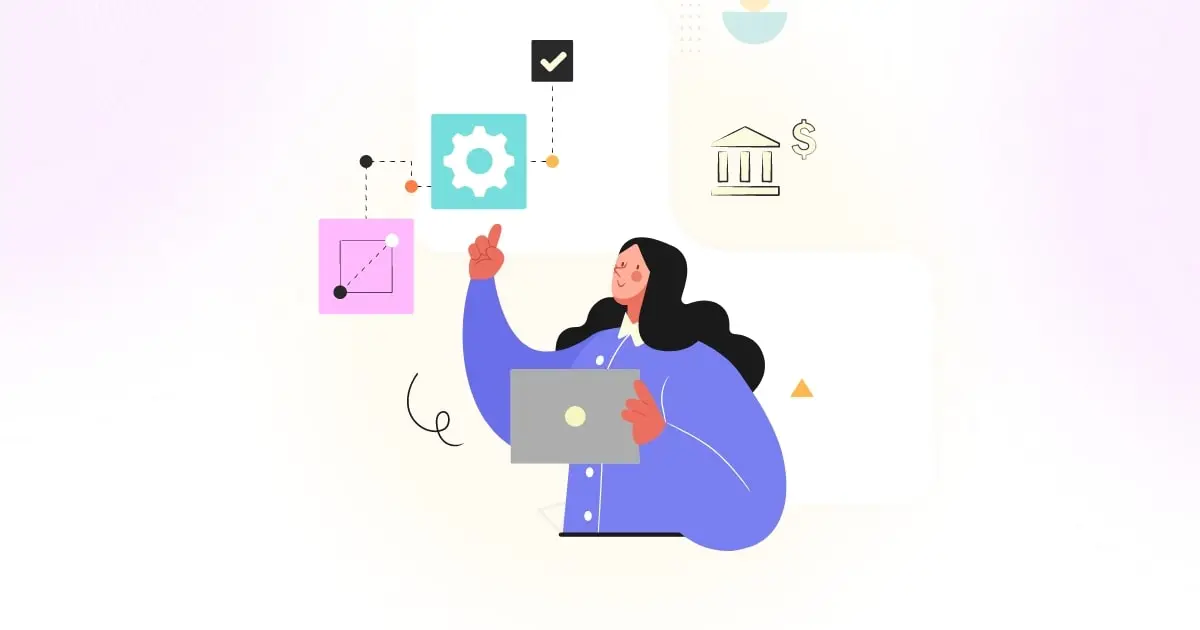Achieving success in today’s business landscape relies on effectively blending training and development initiatives with organizational goals. This fusion ensures that employee training remains relevant and plays a proactive role in achieving crucial business objectives. Prioritizing and recognizing this essential connection empowers organizations to produce tangible results, enhance workforce skills, and gain a competitive edge. Integrating learning and business strategy catalyzes innovation, nurtures employee dedication, and maintains enduring business success.
Jinny Kcehowski, Global Commercial Training Director for Professional Hygiene at Essity, and Nolan Hout, Senior Vice President of Infopro Learning, delve into the crucial connection between learning initiatives and business strategies. They stress the significance of L&D teams aligning with organizational objectives, prioritizing key initiatives, and ensuring that customer-facing employees are well-prepared for success. The discussion highlights the essential role of businesses in prioritizing this alignment for a distinctive customer experience, nurturing their workforce, attaining proficiency within the framework of broader commercial strategies, and more.
Listen to the podcast to learn more:
Question:
Where did you start? How did you get to the success that you’re seeing today in your role?
Question:
Why is it so important to connect that learning to that business strategy?
Question:
Why is it important for the L&D team to be connected to that business strategy?
Expert profile:

Jinny Kcehowski
Jinny Kcehowski is the Global Commercial Training Director for Professional Hygiene at Essity—an action-oriented individual with a lifelong commitment to learning and servant leadership. As the Commercial Director of Training, Jinny is deeply invested in the growth, development, and continuous improvement of herself, her colleagues, and the organization. Her rich experience in training and development includes crafting and automating onboarding programs, implementing Train the Trainer initiatives, enhancing user adoption and engagement of company-wide learning management systems, collaborating with subject matter experts and instructional developers to design coursework, and transforming instructor-led training programs into blended and remote learning experiences, among other notable achievements.

Nolan Hout
Nolan Hout is the Senior Vice President at Infopro Learning. He has over a decade of experience in the L&D industry, helping global organizations unlock the potential of their workforce. Nolan is results-driven, investing most of his time in finding ways to identify and improve the performance of learning programs through the lens of return on investment. He is passionate about networking with people in the learning and training community. He is also an avid outdoorsman and fly fisherman, spending most of his free time on rivers across the Pacific Northwest.
An excerpt of the discussion follows:
Nolan:
Hello, everyone, and welcome to the Learning and Development podcast sponsored by Infopro Learning.
As always, I am your host, Nolan Hout. Today, we will discuss why and how we connect learning to business strategies. Helping me with this conversation is Jinny Kcehowski.
I think out of everyone on the podcast I’ve had so far, I’ve known this person the longest. Maybe I’m using the term known a little loosely. I think we’ve talked four times in the past seven years, but we’ll go ahead and count it. Jinny has done it all in L&D, so I wanted to have her as a guest on the podcast today.
She’s automated onboarding programs, converted ILTs for the classrooms, helped implement LMSs, and even won industry awards for her ability to transform the organization she’s been with. Whenever she has free time, she trains for IRONMAN races and recently completed her first IRONMAN this year. That’s over 70 miles of running, biking, and swimming for those unfamiliar with it.
I’m excited to have Jinny join us today and discuss how we can connect learning to business strategies. I’m sure you’re also excited; let’s get to it.
Hello, Jinny. Welcome to the podcast.
Jinny:
Thanks, Nolan. Thanks for having me.
Nolan:
One of the best things we do on this podcast, which always seems to get the most comments, is just learning about how leaders like yourself get to the position they are in today from their beginning. It’s so interesting because I feel like it’s a little bit unique in the learning and talent training space, where the path is very rarely a straight-line path to where they are. Some of them are, but many times, there are zigs and zags. We’d love to hear from you, Jinny.
Where did you start? How did you get to the success that you’re seeing today in your role?
Jinny:
I was sharing this story last week. Ironically, I was at an event for new employees coming into the business, and they asked this question. And so, I reminisced and shared that I never thought I would be in learning and development when I started my career. I started my career in sales. And, when I went through my onboarding in the sales role, I felt like maybe there were ideas that I had on how that onboarding could have been done a little differently.
I say that with all humility, and companies are looking for feedback, but the company I worked for at the time was small, privately held, family-owned, and had been in business for quite some time. They had a wonderful culture with wonderful people who, when you started, took you under their wing, and they helped you get up to speed.
But as the organization grew quickly, whether Glassdoor or through acquisition, they sought a way to scale that onboarding. And so, really, my first sort of non-official training task was to create an onboarding binder. At the time, it was all paper-based. It was just a stretch; it wasn’t like anyone had given me a title or a role.
But up until that point, no one had created this piece by piece: how do we get someone up to speed? I was in what I consider the sweet spot. I was new enough to remember what it was like not to know anything.
But I had been there long enough to know what you needed to know to establish a solid foundation. So, this binder made its way up to the leadership, and they recognized this as a need in the organization. I was very fortunate that there was a need. And here was the solution, and that was the beginning, I guess, of my head.
Nolan:
That’s so fascinating. It reminds me of a guest on our podcast who earned a gold medal with the Women’s Basketball Team in the USA. She expressed a similar sentiment, sharing that her drive to excel in training stemmed from believing she could coach better than her current mentors. She felt a lack of motivation from them and sensed a need for improvement in their coaching methods. It’s intriguing how, despite a completely different context, there’s a shared mindset. A common thread is the desire to contribute positively, akin to leaving things better than you found, as often seen on hiking trails.
Jinny:
However, what’s intriguing, and I mention this because I frequently engage in discussions about learning and development, is the emphasis on skill-based approaches. The question arises: do you hire based on experience, or do you hire for skills?
In learning and development, there’s a lot of talk about skill-based hiring versus relying solely on resumes. The dilemma is whether you prioritize the candidate’s past experience or their current skill set. I believe our organization needs a balance.
This created an opportunity for my personal growth, learning, and evolution within the company. Today, we often grapple with the balance of hiring based on previous experience. In my case, I had no prior experience, but I managed to showcase my potential, and they took a chance on me.
I am immensely grateful to that manager who saw my potential and gave me the opportunity. It marked the beginning of a truly fulfilling career journey so far.
Nolan:
Absolutely, beginning your career in sales provides an excellent foundation. I, too, started in sales, and I believe it’s a solid starting point for any career. This foundation is particularly valuable regardless of the field, especially in learning and development. L&D may be perceived as less ambiguous than sales, which operates more binary – you either secure the sale and the money, or you don’t. It’s a truly intriguing journey you’ve experienced.
Jinny:
I can assure you that building rapport with stakeholders becomes much easier when you’ve followed a similar path. My background is primarily in commercial training, focusing on sales, marketing, and customer service. While I have experience in leadership development, a significant portion of my expertise lies in commercial training. It adds a unique perspective when working with teams, especially when they know I have firsthand experience as a seller.
Nolan:
What an excellent transition!
It might seem like we orchestrated that, but I assure you, it wasn’t meticulously planned. One of the key topics we aim to delve into today is the correlation between what you’re striving to teach or inform people about and the corresponding business outcomes. We emphasize the importance of aligning learning objectives with business strategy. Given your extensive experience in this field, could you share some insights? Why do you feel it is that important?
Why is it so important to connect that learning to that business strategy?
Jinny:
It holds immense importance on various levels. Firstly, I emphasize the significance of how I approach it. Commercial training, as I define it, involves collaborating with stakeholders and subject matter experts. This collaboration aims to develop and deliver training that significantly influences organizational outcomes. Defining this role is crucial because, in my experience, learning and development teams often face resource constraints, making it challenging to meet their demands.
Rarely do they have ample resources or budgets for the tasks assigned to them. While this is a known reality, understanding the target audience for the training and the tasks they are expected to perform is crucial. Identifying the subject matter experts within the business who can bridge the gap is equally important.
Starting with the learner, it is imperative to consider why this approach is vital. For instance, some knowledgeable product experts lack the skills to deliver effective training in the context of product training. Their expertise does not necessarily extend to instructional design or delivery methods. They may be tasked with training stakeholders, but the disconnect arises when stakeholders express that the training does not meet their needs.
In my experience, when engaging with these subject matter experts, I often encounter a common scenario. They provided me with a presentation deck and asked for assistance. Before delving into the content, I pose a crucial question: What are the three to five key objectives you want the learners to achieve after completing the training?
This question is met with a perplexed expression, and they admit to not having thought about it. Their approach to creating the deck reflects this lack of clarity, including everything they believe the learners need to know. This underscores the essence of commercial training. It involves guiding stakeholders focused on achieving results and assisting subject matter experts in delivering training that aligns with those objectives. By understanding the needs of both parties, one can facilitate a training process that truly contributes to organizational success.
Nolan:
Indeed, I believe this is crucial because the connection between training and the ability to navigate change is significant. Discussing this with someone else highlighted the importance of linking learning to business strategy for the individual. It impacts them directly, and you miss the mark entirely if you overlook the individual in your strategy development.
I recall a particular training request from a client asking for a proposal for 20 hours of brand training. While willing to accept the request, we questioned whether anyone in their organization had the time for such extensive training. Their response was negative; they only had an hour available. This highlighted the importance of considering the learner’s time constraints in training implementation. It emphasizes the need to focus on learner-centric approaches, as understanding their time availability, mental space, and organizational constraints can help identify potential roadblocks.
One of our sales trainers shared a simple yet effective strategy: a monthly email program to sales managers, asking them to forward it to their sales teams. It wasn’t elaborate or expensive, but it made a significant impact because it aligned with how salespeople operate, spending much of their time in their inbox. This example underscores the importance of tailoring training methods to suit the preferences and habits of the learners.
Connecting a strategy to the learner is a crucial starting point. We can overcome obstacles and achieve successful engagement and change by understanding and addressing their needs and preferences.
Why is it important for the L&D team to be connected to that business strategy?
Jinny:
It boils down to our earlier discussion about obtaining proper prioritization as a function, securing adequate resources, and the right headcount. Throughout my career, I’ve often encountered what I would call a “prove and move” mentality. Essentially, if I can demonstrate the impact of training on a specific initiative, it opens the door for more resources. However, during needs analysis or action mapping, it becomes evident that training is just one piece of the puzzle.
By aligning a training initiative with a business initiative and witnessing the positive results, it becomes possible to justify requesting additional resources or team members for further scaling. In training and development, the correlation between activities and results is crucial. Understanding the business strategy is equally important, as it facilitates informed decision-making on which tasks to prioritize, given the workload.
Additionally, determining the scope of these matters is crucial. The L&D team’s decision-making plays a significant role in identifying what truly contributes to the strategy and yields results. It’s essential to acknowledge that certain aspects may be desirable, but if there isn’t sufficient capacity to address them, they may need to be put on hold.
Jinny and Nolan further emphasize the need to bridge the gap between talking about connecting learning to the business and engaging with businesses on the matter. Effective strategies over the years have been crucial for ensuring this connection. A few more questions asked during the podcast are:
- It’s good that we talk about connecting learning to business, but unfortunately, nobody’s going to the business and saying how are you connecting your business to learning. But why is it important for them to care? Why do they need to close that loop?
- It sounds very easy to say well, go to the business and ask, but what have you found? What are those strategies that you’ve employed over the years to do this to make sure that those two things are connected?
- Everybody listening to this podcast, no doubt, will put together their Kirkpatrick level, send it to their business leaders, and be motivated. What’s the first answer they get? What do they need to know before they go and start encountering those roadblocks?



